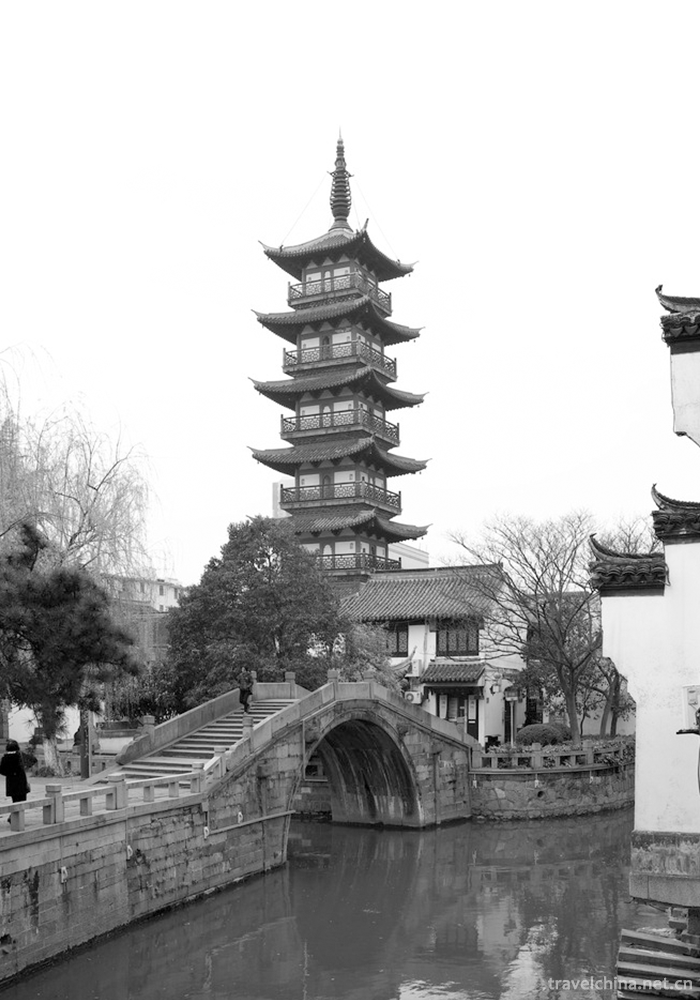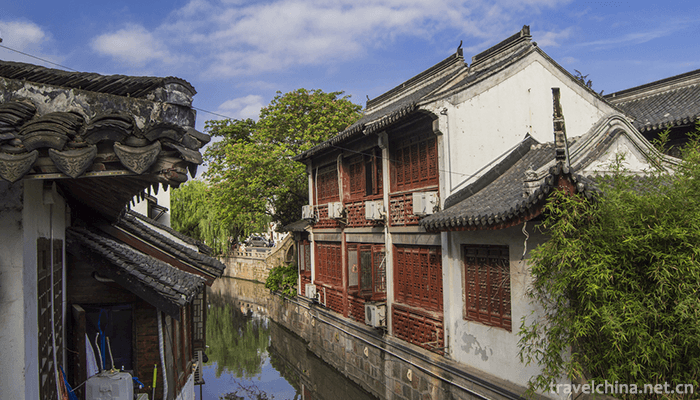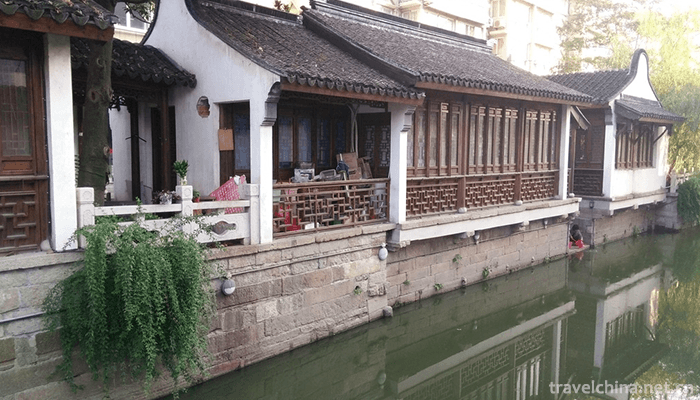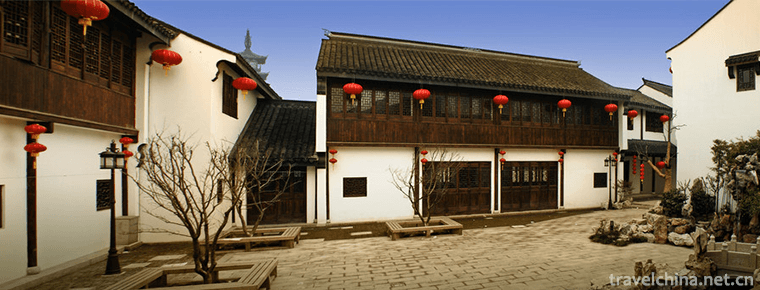Zhou Qiao old street
Zhou Qiao old street
Zhouqiao Old Street is a national AAAA tourist attraction. The old street of Ximen in Jiading is located on the west side of Bole Square in downtown Jiading, which retains the characteristics of ancient dwellings in Ming and Qing Dynasties. Located in the center of Jiading Ancient Town, it is the busiest and liveliest place in the ancient town. Here the river is vertical and horizontal, and the river system is developed. The Ming and Qing streets, which are only one river away after the renovation, are officially open to tourists.
Summary
Just a week ago, a Ming and Qing street just a river away from the renovation was officially open to tourists.
Sketch
There were human activities in the area of Ximen Old Street in Jiading as early as the Pre-Qin Dynasty, and settlements were formed in Tianjian Period of Nanliang (502-519). Jiading in Tang Dynasty was named "Lianqi City" because of Lianqi River. In the ten years of Jiading in Southern Song Dynasty (1218), there was a county government, named "Jiading" according to the year number. Jiading Town is the commercial, cultural and tourist center of Jiading District, covering an area of 4.17 square kilometers. In October 2008, Jiading, an ancient town, was recognized by the Ministry of National Construction as "a famous historical and cultural town in China".
Jiading Bridge is the root of Jiading. Since the county was founded in 1218, it has not been moved for 800 years. It is the birthplace of Jiading's history and culture. Within these thousands of steps, the ancient pagodas, stone streets, old bridges, old temples and famous gardens of the Song, Yuan, Ming and Qing dynasties have been gathered, with vast humanities and profound connotations. Tourists can visit Huilongtan, Confucian Temple, Fahua Tower, Qiuxia Nursery and other ancient scenic spots. They can also visit the Bamboo Carving Museum, Luli Shao Art Academy, and view the old streets on both sides of the Cross River, taste snacks, and look for the impression of Jiangnan ancient city civilization.




-
1.Nangongshan National Forest Park
Nangongshan National Forest Park, located in Langao County, Ankang City, Shaanxi Province, is a branch of Hualongshan Mountain of Daba Mountain System, 33 kilometers from the county seat
Time 2018-12-27 -
2.Shaanxi History Museum
Shaanxi History Museum, China's first large-scale modern national museum, the first batch of China's "AAAA" class tourist attractions, known as the "ancient capital pearl,
Time 2019-02-08 -
3.The Twin Colossals
Shuangta Mountain is located ten kilometers southwest of Chengde Summer Resort in Hebei Province, with a total area of 3000 hectares and beautiful scenery. It is the largest natural scenic resort in C
Time 2019-02-08 -
4.Duodi dances
Multi-place dance, Tibetan folk dance, is a unique way for Tibetan people to dance and sing. It mainly distributes in three areas of Zhouqu County, Gansu Province
Time 2019-04-28 -
5.Sacrifice forest
Sacrifice to the gods of villages, as well as "Amaron" and "Pumatu" and other names, is a traditional festival of the Hani people, which takes villages as units and integrates reli
Time 2019-05-05 -
6.Manchu Folk Stories
Liaoning is a region where Manchu people have formed, risen and grown up. It contains extensive and profound Manchu cultural relics and connotations. Manchu folktales originated from the Manchu people
Time 2019-05-18 -
7.Miao Lusheng Dance
Lusheng dance, also known as "stepping on Lusheng" and "stepping on the singing hall", is named for its accompaniment and self-boasting dance. It spreads in the Miao, Dong, Buyi, S
Time 2019-06-05 -
8.PuXian opera
Puxian Opera is one of the oldest operas in China. It originated in Tang Dynasty, became in Song Dynasty and flourished in Ming and Qing Dynasty. It is known as the "living fossil" of Southe
Time 2019-06-09 -
9.Qin opera
Qin Opera, also known as Bangzi Opera, is a traditional drama in Northwest China and one of the national intangible cultural heritage.
Time 2019-06-10 -
10.Shandong Express Book
Shandong Quick Book, originating from Shandong Province's local traditional folk art form, has a history of more than 100 years. It was first popular in Shandong, North China and Northeast China, and
Time 2019-06-13 -
11.Four famous Chinese embroidery
Suzhou embroidery is famous for its fine stitches, elegant colors and fine embroidery. It has the characteristics of flat, light, even, harmonious, fine and dense. The theme is mainly about small animals. Such as "cat play", "wind through flowers",
Time 2020-12-12 -
12.Yibin transportation
Yibin is a transportation hub city in South Sichuan, which is famous for its comprehensive three-dimensional transportation network of water, land and air. It is located at the starting point of the golden waterway of the Yangtze River and the strategic point of Sichuan Yunna
Time 2020-12-18